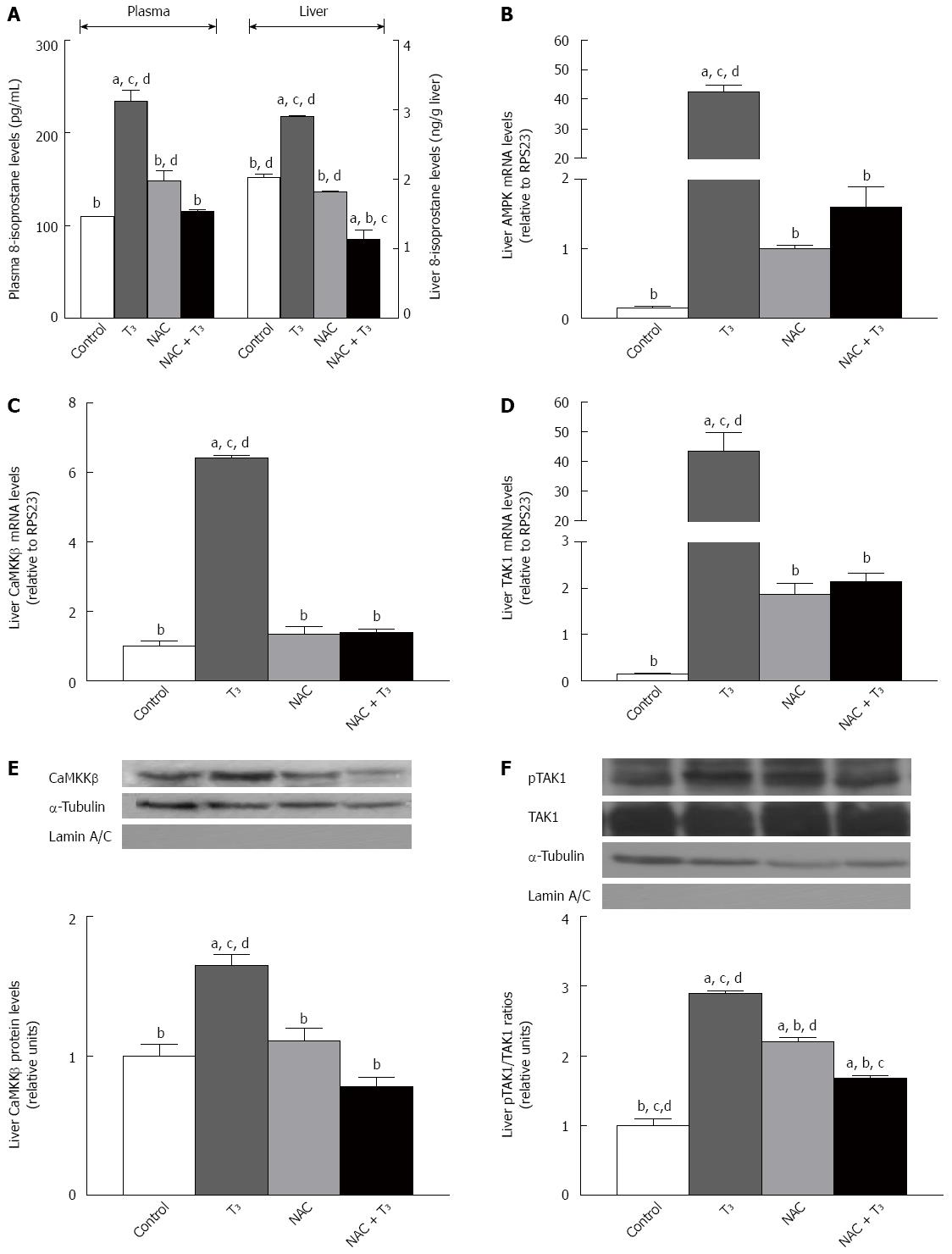Copyright
©2014 Baishideng Publishing Group Inc.
World J Gastroenterol. Dec 14, 2014; 20(46): 17416-17425
Published online Dec 14, 2014. doi: 10.3748/wjg.v20.i46.17416
Published online Dec 14, 2014. doi: 10.3748/wjg.v20.i46.17416
Figure 1 Effect of N-acetylcysteine on T3-induced liver CaMKKβ/TAK1-AMPK cascade.
(A) Rat plasma and liver 8-isoprostane levels, liver mRNA levels of AMPK (B) and CaMKKβ (C, E) hepatic CaMKKβ protein content, and liver expression of TAK1 mRNA (D) and pTAK1/TAK1 ratios (F). Values shown are means ± SEM (n = 3-4). Statistical significance (one-way ANOVA and the Newman-Keuls, test; P < 0.05) is indicated by the letters identifying each experimental group. AMPK: AMP-activated protein kinase; CaMKKβ: Ca2+-calmodulin-dependent protein kinase kinase-β; NAC: N-acetylcysteine; (p)TAK1, (phosphorylated) transforming growth factor-β-activated kinase-1.
- Citation: Videla LA, Fernández V, Cornejo P, Vargas R, Morales P, Ceballo J, Fischer A, Escudero N, Escobar O. T3-induced liver AMP-activated protein kinase signaling: Redox dependency and upregulation of downstream targets. World J Gastroenterol 2014; 20(46): 17416-17425
- URL: https://www.wjgnet.com/1007-9327/full/v20/i46/17416.htm
- DOI: https://dx.doi.org/10.3748/wjg.v20.i46.17416









